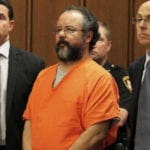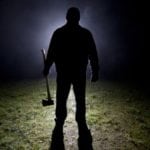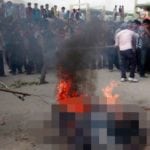 Politics
Politics  Politics
Politics  Weird Stuff
Weird Stuff Ten Bizarre Facts About The Doge Meme
 Our World
Our World 10 Ways Your Christmas Tree Is More Lit Than You Think
 Movies and TV
Movies and TV The 10 Coolest Stars to Set Sail on The Love Boat
 History
History 10 Things You Didn’t Know About the American National Anthem
 Technology
Technology Top 10 Everyday Tech Buzzwords That Hide a Darker Past
 Humans
Humans 10 Everyday Human Behaviors That Are Actually Survival Instincts
 Animals
Animals 10 Animals That Humiliated and Harmed Historical Leaders
 History
History 10 Most Influential Protests in Modern History
 Creepy
Creepy 10 More Representations of Death from Myth, Legend, and Folktale
 Politics
Politics 10 Political Scandals That Sent Crowds Into the Streets
 Weird Stuff
Weird Stuff Ten Bizarre Facts About The Doge Meme
 Our World
Our World 10 Ways Your Christmas Tree Is More Lit Than You Think
Who's Behind Listverse?

Jamie Frater
Head Editor
Jamie founded Listverse due to an insatiable desire to share fascinating, obscure, and bizarre facts. He has been a guest speaker on numerous national radio and television stations and is a five time published author.
More About Us Movies and TV
Movies and TV The 10 Coolest Stars to Set Sail on The Love Boat
 History
History 10 Things You Didn’t Know About the American National Anthem
 Technology
Technology Top 10 Everyday Tech Buzzwords That Hide a Darker Past
 Humans
Humans 10 Everyday Human Behaviors That Are Actually Survival Instincts
 Animals
Animals 10 Animals That Humiliated and Harmed Historical Leaders
 History
History 10 Most Influential Protests in Modern History
 Creepy
Creepy 10 More Representations of Death from Myth, Legend, and Folktale
10 Terrifying Facts About The Cleveland Torso Murderer
This year may be the year that several unsolved cases are finally put to rest. The most high-profile cold case to be solved in 2018 so far concerns the Golden State Killer (GSK), a serial killer and serial rapist who stalked California from 1974 until 1986. 72-year-old Joseph DeAngelo, a former police officer in Auburn, California, was charged with the GSK’s crimes thanks to investigators’ controversial use of a genealogical website to track him down. Various police departments across the country are now poised to use this technique to solve their own cold cases.[1]
One cold case may not be solved, however. The case of the Mad Butcher of Kingsbury Run, also known as the Cleveland Torso Murders, ran from 1935 until 1938. This was long before the collection and storage of forensic evidence was common, so the likelihood of finding possible DNA samples in the archives of the Cleveland Police Department are very slim.
The unknown fiend is believed to have murdered and mutilated at least 12 people, most of whom were the working poor and homeless citizens of Cleveland. The neighborhood of Kingsbury Run, which proved to be the killer’s preferred hunting and dumping ground, was known throughout Cleveland as a popular congregation spot for hobos and indigent labor. The victims of the Mad Butcher mostly came from the very bottom of society, and it is very likely that the killer himself thought that such individuals would not draw too much attention.
These gruesome murders did draw national media attention, though, and thanks to several big-name law enforcement officials, the case of the Mad Butcher is one of the more infamous entries in the big book of American true crime.
10 The First Known Victims

In September 1934, just east of the town of Bratenahl, a young man found a woman’s detached torso. The corpse only included the woman’s abdomen and her thighs to her knees. When this gruesome find was presented to Cuyahoga County coroner A.J. Pierce, he noted that some kind of chemical preservative had been used and that it had turned the woman’s skin red and had given it a leather-like quality.[2] Pierce claimed that the woman was in her mid-thirties at the time of her death. No head was ever recovered, and the woman quickly became known as the Lady of the Lake (the lake in question being Lake Erie).
One year later, the first named victim of the Mad Butcher was uncovered near Jackass Hill, a spot at the nexus of Kingsbury Run and East 49th Street. The victim turned out to be Edward Andrassy, a handsome 28-year-old and a known bisexual. Andrassy had been decapitated and emasculated prior to death. A police report noted that, even in death, the son of Hungarian immigrants managed to maintain his good looks.
9 Florence ‘Flo’ Polillo
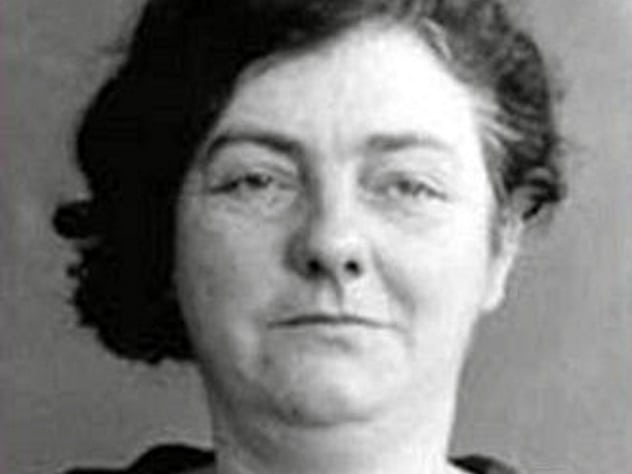
By the winter of 1936, America was still knee-deep in the Great Depression. Impoverished workers choked the streets of Cleveland. Others, like Flo Polillo, had always been social losers, but the bad economy made their awful luck worse.
Like Andrassay, Flo was a heavy drinker. While Andrassy’s love for the bottle drove him to sodomize other people’s wives and engage in recreational drugs and pornography, Flo’s addiction simply kept her working the streets as a cheap prostitute. On the cold morning of January 26, 1936, several neighbors woke up to the incessant baying of a local dog. When they investigated, they found the dog straining on its tight leash. The dog, it seemed, was trying desperately to get at a basket.
Inside of the basket was a mutilated female torso that had been cut into pieces and wrapped in newspaper. Also inside was a detached hand. These body parts were later identified as belonging to the 42-year-old Polillo.[3] This shocking find would be the last in the Mad Butcher case. Not the last corpse, mind you, but the last victim to be identified by name.
8 The Tattooed Man
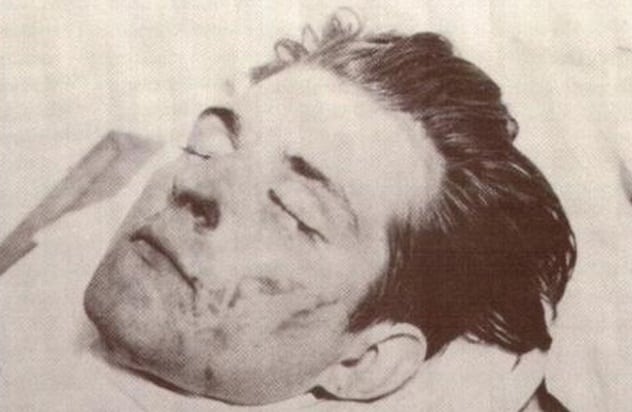
On June 5, 1936, 11-year-old Allum Cheely and 13-year-old Gomez Ivory were playing hooky from school. The two boys really wanted to go fishing and saw learning as an impediment. So, near the Kingsbury Run area, the boys stumbled across a decapitated head in the scrub brush near the river. Elsewhere, the two boys also found the victim’s torso. Given that this torso was decorated with tattoos, this victim became known as the Tattooed Man.
Despite having the man’s decapitated head perfectly intact, Cleveland detectives were never able to properly identify him. The police suggested that the man was between 178 and 180 centimeters tall (5’10”–5’11”), weighed somewhere around 70 kilograms (155 lb), had blue eyes, and was possibly of either Slavic or Scandinavian extraction.[4] The man’s tattoos also led investigators to believe that he worked as a sailor at some point in his life. He may have even been a criminal, for back in the 1930s, tattoos were most often associated with seamen and ex-cons.
At this crime scene, police found very little blood, thus leading the authorities to suspect that the killer actually butchered his victims elsewhere before dumping their bodies near Kingsbury Run.
7 Enter The Untouchable
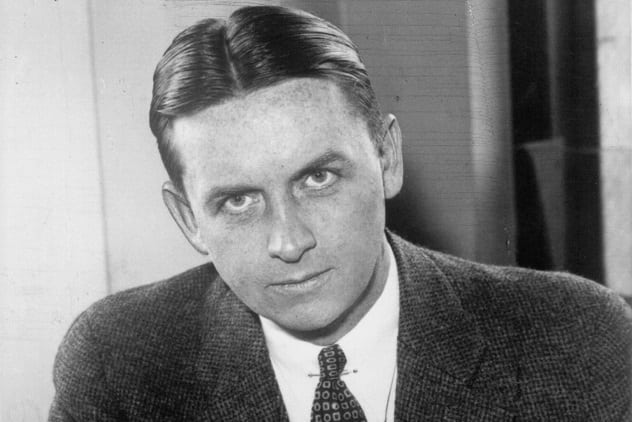
By the summer of 1936, Cleveland’s authorities knew that they had a serial killer on their hands. Of course, the term “serial killer” did not exist back then, so the murderer was referred to as a “butcher,” a “sexual sadist,” and other things. A man who would play an important role in this case was Cleveland’s public safety director, Eliot Ness.
Only a few years prior to joining the government in Cleveland, Ness had made his name in Chicago as a federal agent. In order to thwart the rampant corruption of the Chicago Police Department and certain revenue agents tasked with enforcing the Volstead Act, Ness gathered up a group of former soldiers, football stars, and police officers who were known for being incorruptible. These men became known as the Untouchables, and their war against mobster Al Capone saw them raid illegal distilleries and breweries while wielding submachine guns. Even in his own time, the myth of Eliot Ness was hyped by the mass media, and much of this hype neglected the fact that the Untouchables played a relatively minor role in Capone’s conviction on charges of tax evasion.
In 1935, after Ness spent time chasing down moonshiners in Kentucky and Ohio, Cleveland mayor Harold Burton, a Republican in a primarily Democratic city, named Ness as his public safety director. In this position, Ness helped to install stoplights throughout the city, thus cutting down on traffic fatalities. He also saw great success against Cleveland’s Italian Mafia and its many corrupt police officers. In just his first year alone, Ness helped Cleveland to earn the title of “safest city in the USA” by the National Safety Council.[5]
Sadly, all of Ness’s gains in Cleveland have been forgotten because of his failure to catch the Mad Butcher.
6 Bodies Pile Up
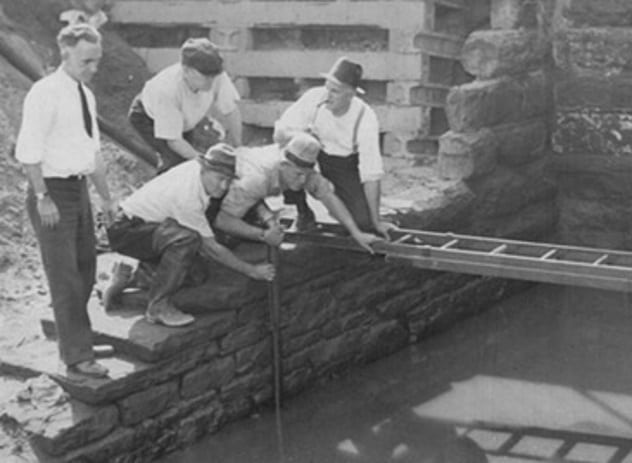
Following the discovery of the Tattooed Man, Mad Butcher victims began to be found at an alarming rate. In July 1936, a teenage girl discovered the brutalized remains of a 40-year-old white male. Like the others, this man’s head was cut off. Also, given the high volume of blood that had seeped into the ground, police theorized that the Mad Butcher had killed him at that spot a few months earlier.
In September 1936, a hobo walking along East 37th Street tripped over the upper portion of a man’s torso. The lower portion was discovered by police in a nearby sewer. Coroner Pierce noted that decapitation had killed the man and that the killer showed no signs of hesitation as he sawed the head clean off.[6]
The next summer, in June and July 1937, Cleveland residents found a skull and bones near the Lorain-Carnegia Bridge and one terribly mutilated corpse. This second corpse, which had been found in July 1937, had been discovered floating in the Cuyahoga River. This torso’s heart was removed.
5 Street Violence
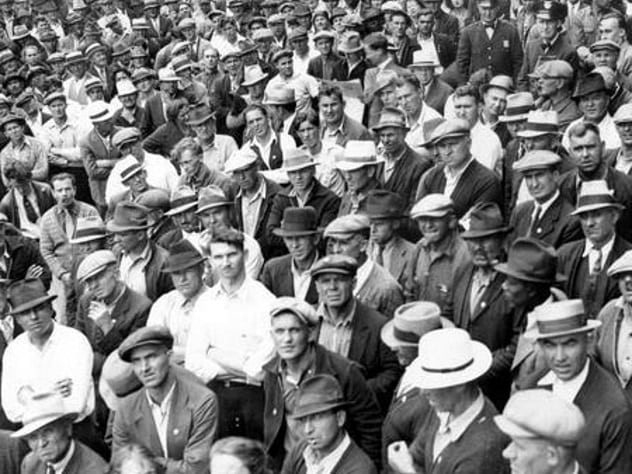
The summer of 1937 was a very troublesome time for the city of Cleveland. In that year, a major steel strike (latter to be known as the Little Steel Strike of 1937) began at the Republic Steel Company in Youngstown, Ohio. The strike, which was supported by the Congress of Industrial Organizations (CIO), agitated for better wages and safer working conditions. The strike soon spread to Cleveland, where it took on a violent character.
Mayor Burton threw fuel onto the fire by revoking Republic Steel’s permit to operate at an airfield located at St. Clair Avenue. Then, after a labor arbitration failed to reach any compromise, Ohio governor Martin L. Davey, a Democrat, activated the Ohio National Guard to Cleveland in order to protect non-striking workers.[7] The National Guard managed to keep the peace, but ten days after they left the city, a riot erupted between strikers and workers at the Corrigan-McKinney plant operated by Republican Steel.
During all of this labor chaos, the Mad Butcher continued his awful work, thus creating an outside view of Cleveland as an anarchic metropolis.
4 The Butcher’s Last Year In Cleveland
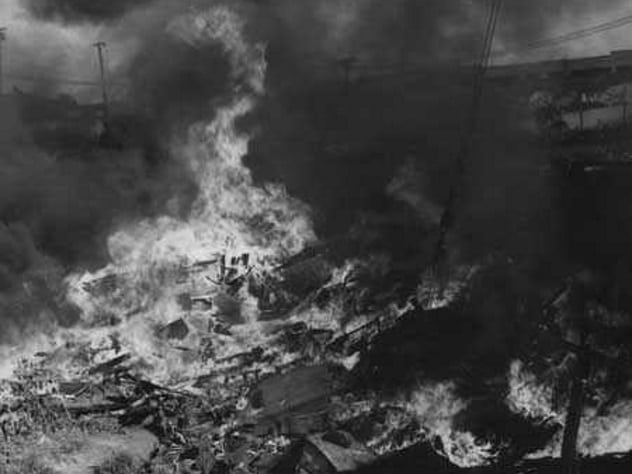
1938 would mark the last year of the Mad Butcher murders in Cleveland. In April of that year, a day laborer making his way across the Flats in Cleveland found the lower half of a woman’s detached legs near the banks of the Cuyahoga River. One month later, after dragging the river, police found two burlap bags that contained the rest of the victim’s legs.
In August 1938, scrap collectors found the remains of a woman wrapped up in a man’s double-breasted blazer jacket. The legs and arms were inspected, and the new county coroner, Democrat Sam Gerber, theorized that this victim had been refrigerated at some point. Gerber also noted that the April victim had drugs in her system prior to death.
By this point in the investigation, Ness was facing harsh criticism. So, in turn, Ness decided to take drastic action in order to stop the murders. At 12:40 AM on August 18, 1938, Ness ordered the complete demolition of the homeless encampments at Kingsbury Run. Some 300 homeless individuals were evicted, and at least 100 wooden shacks were burned to the ground.[8] Ness intended for this move to deny the Mad Butcher his favorite targets and favored hunting ground. However, the move only further stoked resentment against Ness.
3 Detective Peter Merylo
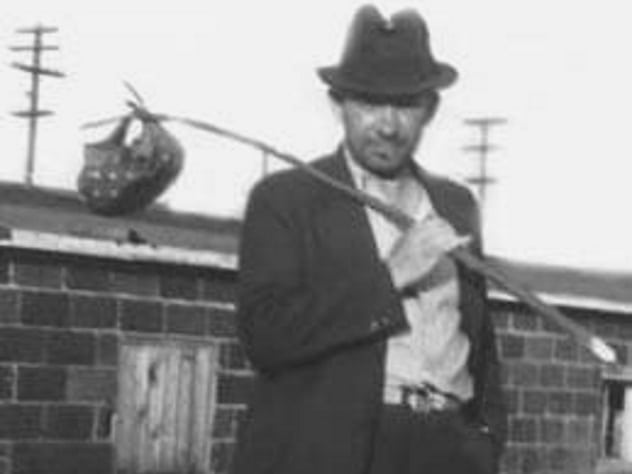
While Ness received most of the press’s attention, the true top investigator on the Mad Butcher case was Cleveland detective Peter Merylo (pictured undercover above). Merylo, like a lot of people in Cleveland in the 1930s, was originally born in Eastern Europe. A native of Ukraine, Merylo quickly became one of the best officers on the force. Unlike the college-educated Ness, Merylo was a blue-collar investigator who could speak several European languages. For more than 18 years, Merylo investigated the Mad Butcher case.
At one point, Merylo offered his opinions about the killer to the Cleveland press, saying: “The murderer is a sex degenerate,” maybe a necrophiliac who “may have worked in the pathology department of some hospital, morgue or some college where he had an opportunity to handle a great number of bodies, or may have been employed in some undertaking establishment and . . . had a mania for headless nude bodies.”[9] Unbeknowst to him, Ness shared some of Merylo’s beliefs about the makeup of the Mad Butcher.
Merylo would continue to investigate the Mad Butcher case after 1938, and he was possibly the first man to connect the Cleveland murders with others in the Midwest and Mid-Atlantic.
2 New Castle Murders
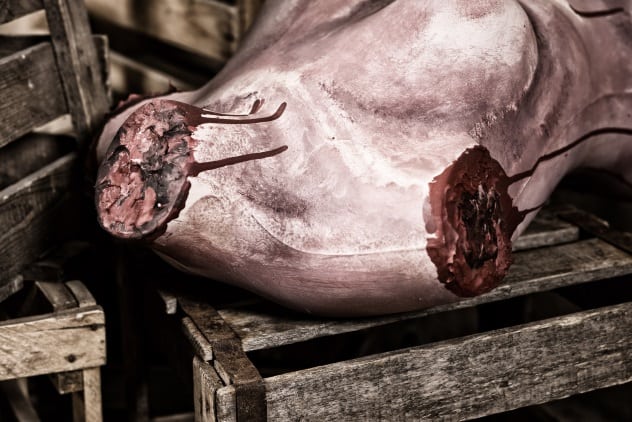
Merylo believed that the Mad Butcher was responsible for a string of grisly mutilation murders in nearby New Castle, Pennsylvania. In particular, a swampy area that locals called the Murder Swamp began offering up detached heads as early as the 1920s.
Between 1925 and 1934, four mutilated corpses were found near the Murder Swamp. This was in addition to two other corpses that had been found near the same area. Angry residents stormed the Murder Swamp in 1934 in order to find more clues. They failed in this mission, but the murders did stop for five years.
Then, in 1939, the murders started up again. Six more bodies would be discovered by 1942.[10] Interestingly, the period of inactivity in New Castle, which ran from 1935 until 1938, corresponded exactly with the torso murders in Cleveland.
Given the close proximity between Cleveland and New Castle, and given the similarities in the mutilation of the corpses, Merylo and others came to the conclusion that the two cases were the work of the same man.
1 Ness’s Suspect

In 1939, police finally arrested someone in connection with the Mad Butcher murders. This suspect was a Czech immigrant bricklayer by the name of Frank Dolezal. Dolezal had known both Polillo and Andrassy, and this fact was good enough for Cuyahoga County sheriff Martin O’Donnell. Cleveland police officers were never consulted on the matter, and Dolezal eventually confessed after a lengthy interrogation.
Few people then or now believe that Dolezal was the Mad Butcher. Ultimately, the diminutive bricklayer died in his county jail cell. He either committed suicide or was murdered by deputies.
Unbeknownst to almost everybody, Ness had already found his prime suspect and had interrogated him in secret for days. This suspect first came to the attention of the police after Coroner Gerber told investigators to focus on doctors and surgeons. Gerber also told detectives to find doctors with alcohol dependency or past convictions for sex crimes. By using this method, Ness and those officers close to him came across Dr. Francis E. Sweeney, a physically powerful but hopelessly drunk and schizophrenic doctor who had grown up in the Kingsbury Run area.
Sweeney had once been a surgeon at St. Alexis Hospital but had been let go due to his alcoholism. There were also rumors that Sweeney, a veteran of World War I, was bisexual. However, despite these intriguing personality traits, Sweeney was written off because of his family connection to US Congressman Martin L. Sweeney and the fact that Dr. Sweeney had voluntarily committed himself to the Sandusky Soldiers’ and Sailors’ Home, a hospital for veterans.
Ness and investigators did later find out that Sweeney had virtually no oversight at the hospital and could come and go as he pleased. Sweeney had also performed several amputations during the war and was thus an experienced mutilator. Even more troubling, while kept in a Cleveland hotel room by Ness for three days, Sweeney failed two polygraph tests. Ness would later say that Sweeney mailed him taunting postcards after 1938. Because of Dr. Sweeney’s political protection (Congressman Sweeney was one of Ness’s biggest political enemies), the doctor was never charged with any of the crimes.
Decades later, writer James J. Badal claimed that Sweeney was definitely the killer. Badal highlighted that Sweeney most likely used one of the abandoned breweries along the Cuyahoga River to mutilate and drain the blood from his victim’s corpses.[11] For his part, Merylo believed that the killer did his dirty work in boxcars aboard trains that ran between Cleveland, Sandusky, and New Castle.
Read about more terrifying unsolved crimes on 10 Haunting Unsolved Mass Murders and 10 Terrifying American Serial Killers Still At Large.
![11 Lesser-Known Facts About Mass Murderer Jim Jones [Disturbing Content] 11 Lesser-Known Facts About Mass Murderer Jim Jones [Disturbing Content]](https://listverse.com/wp-content/uploads/2020/09/jonestown2-copy-150x150.jpg)
